Abstract
Triamcinolone acetonide was administered in excessive dosage to dogs to study the renal mechanism responsible for polyuria which is a clinically undesirable side effect of long term glucocorticoid therapy.
Polyuria occurred coincident with a significant increase in urinary solute output. Although continuous administration of triamcinolone acetonide at 0.1 or 0.2 mg/lb/day caused a small but significant increase in creatinine output, the primary mechanism for the polyuria was increased solute excretion. Associated with the polyuria was pronounced hyperphagia and polydipsia. The cause of the hyperphagia was not established. The increase in electrolyte excretion caused by this synthetic steroid was probably compensated for by the hyperphagia. Because all the dogs showed muscle weakness and loss of body condition, it is likely that alteration in protein and amino acid metabolism was responsible for the hyperphagia.
Full text
PDF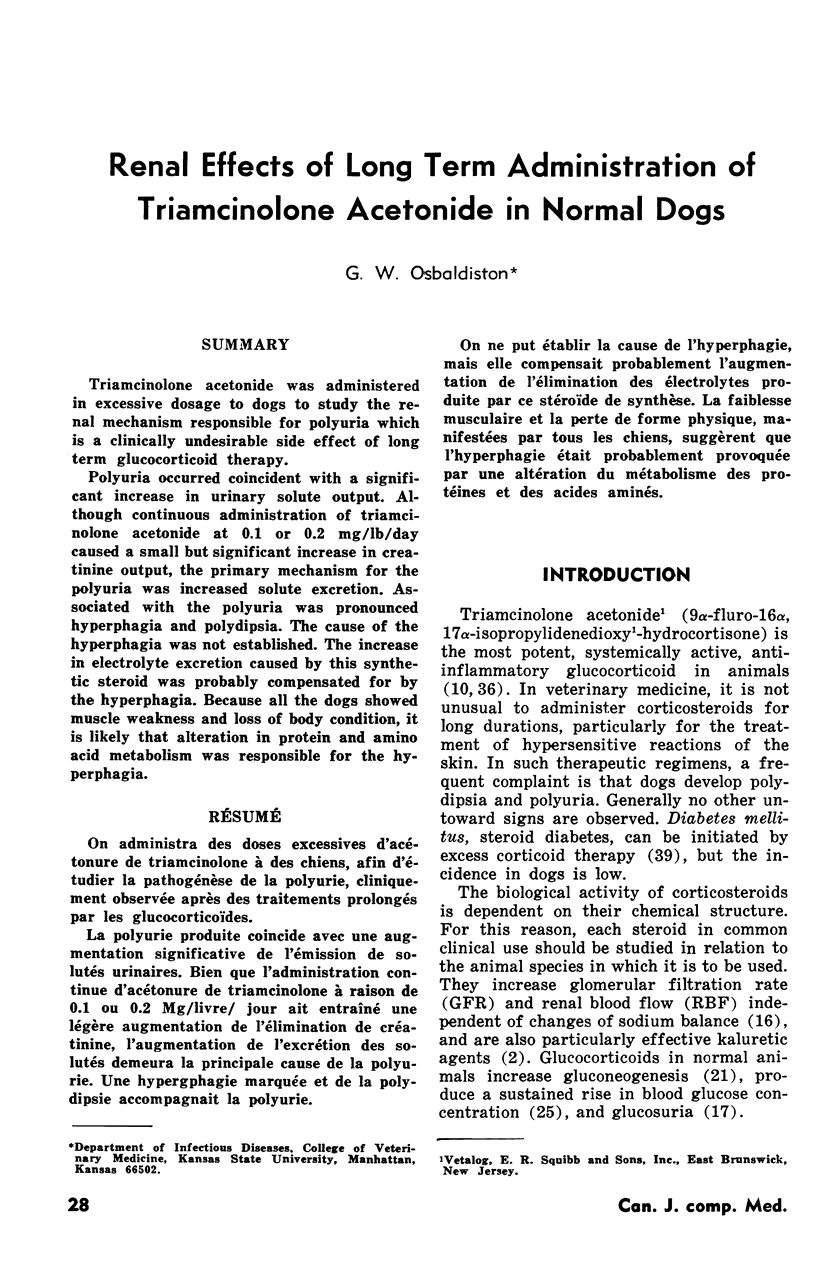
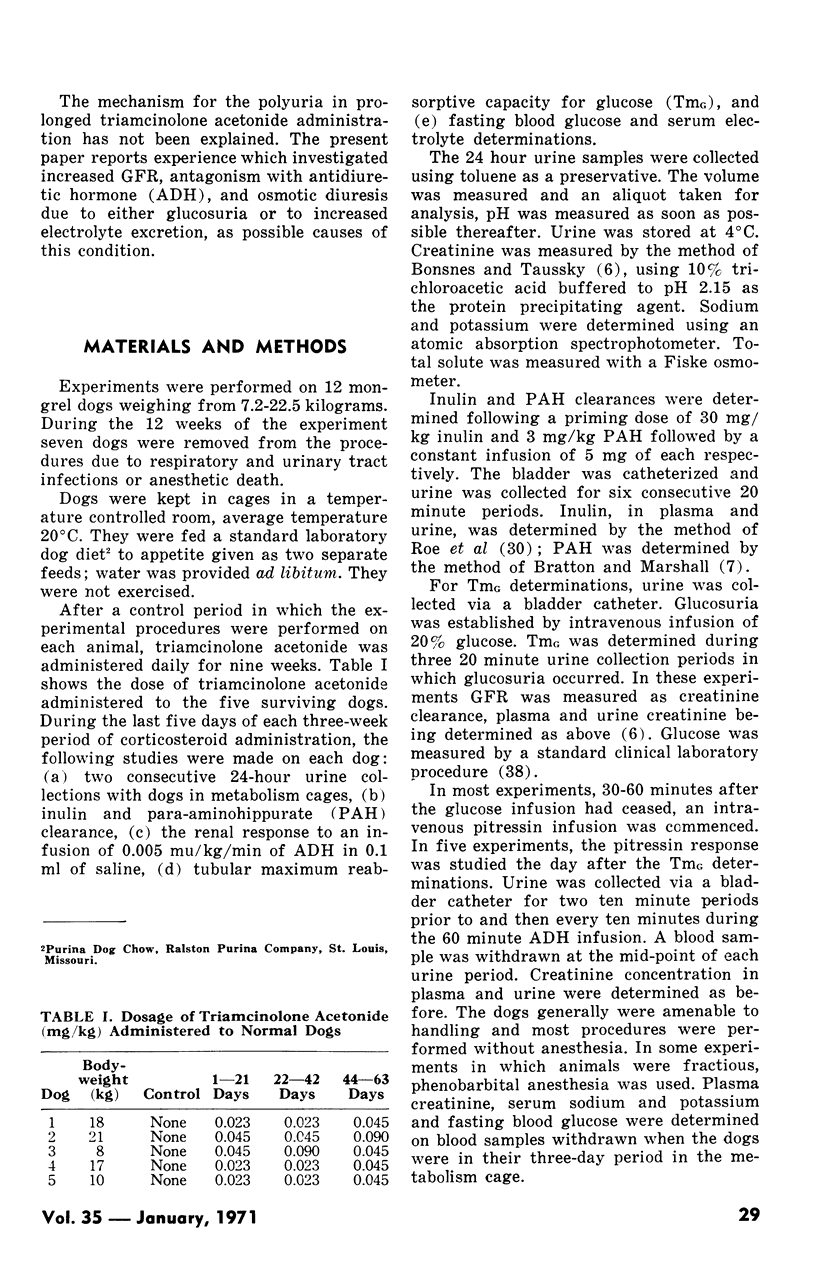
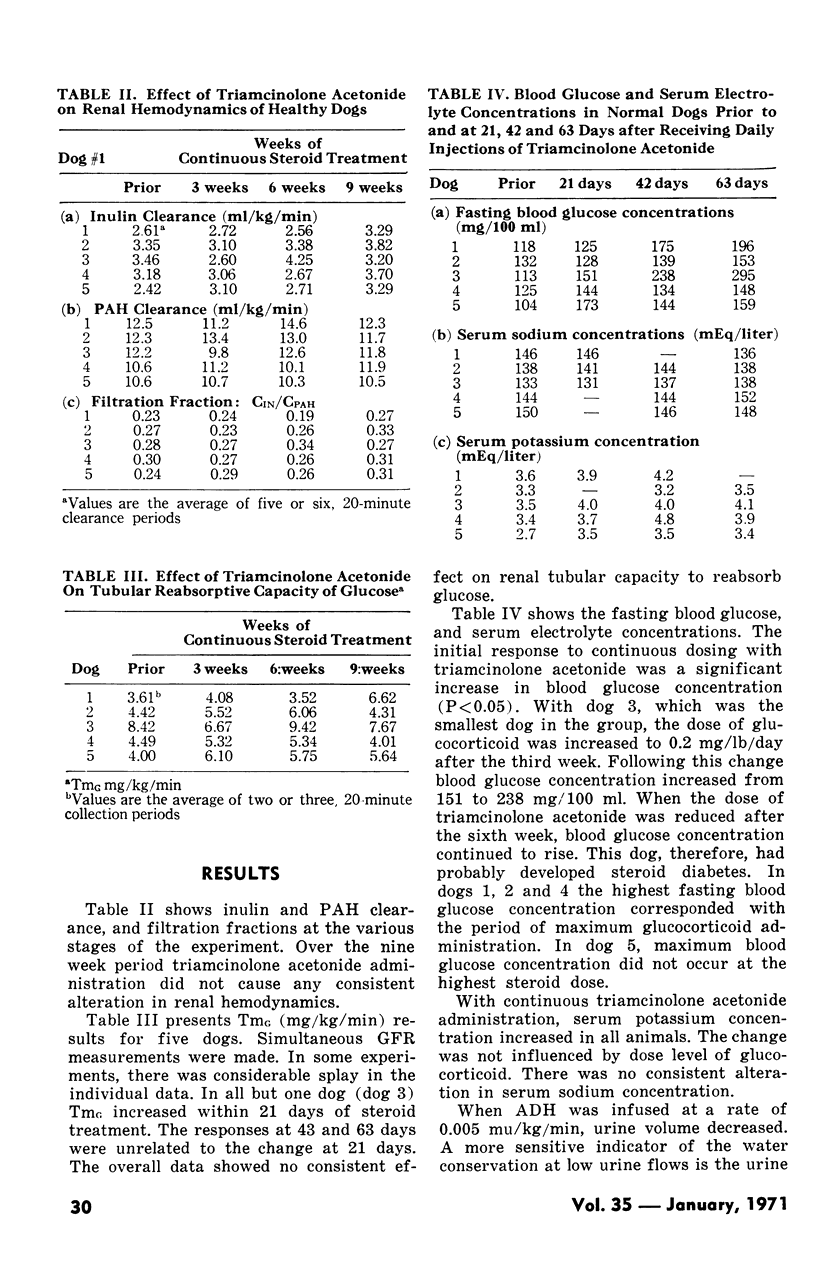
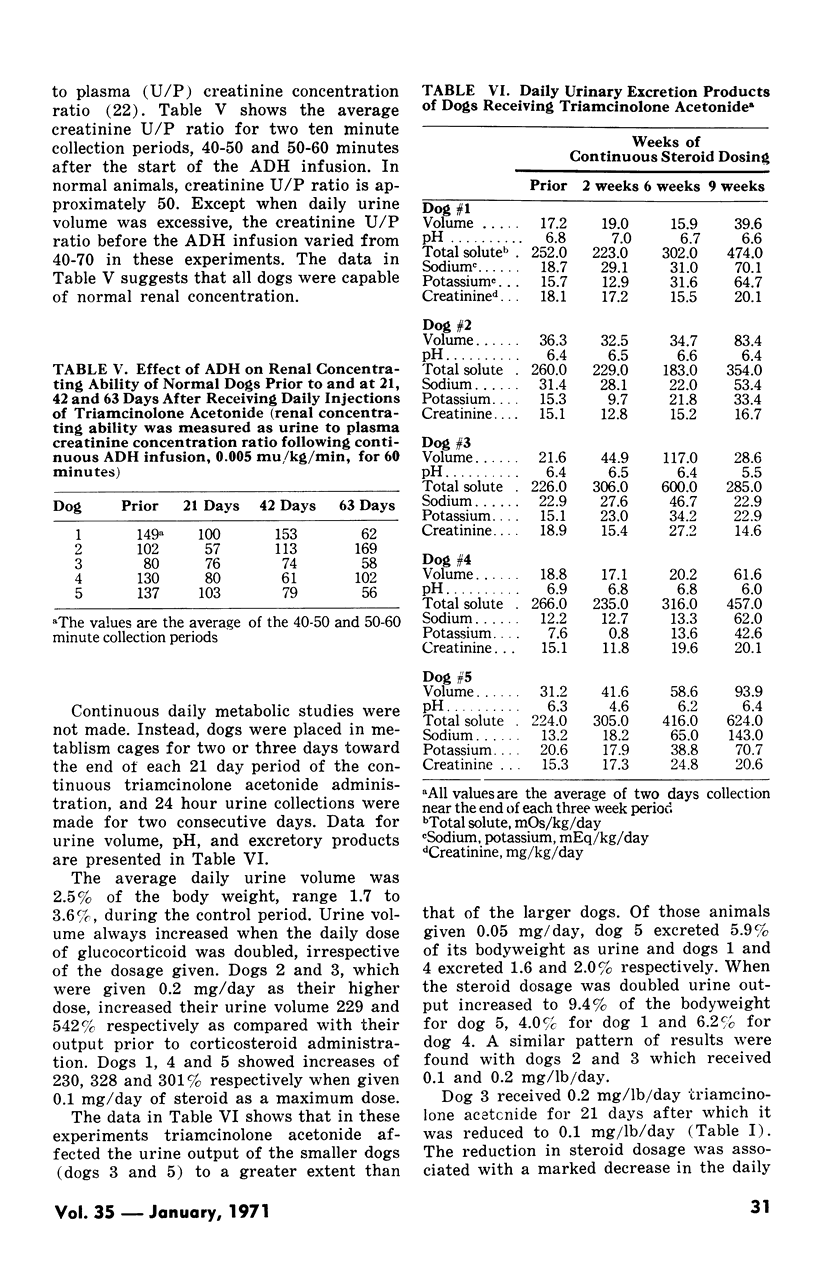
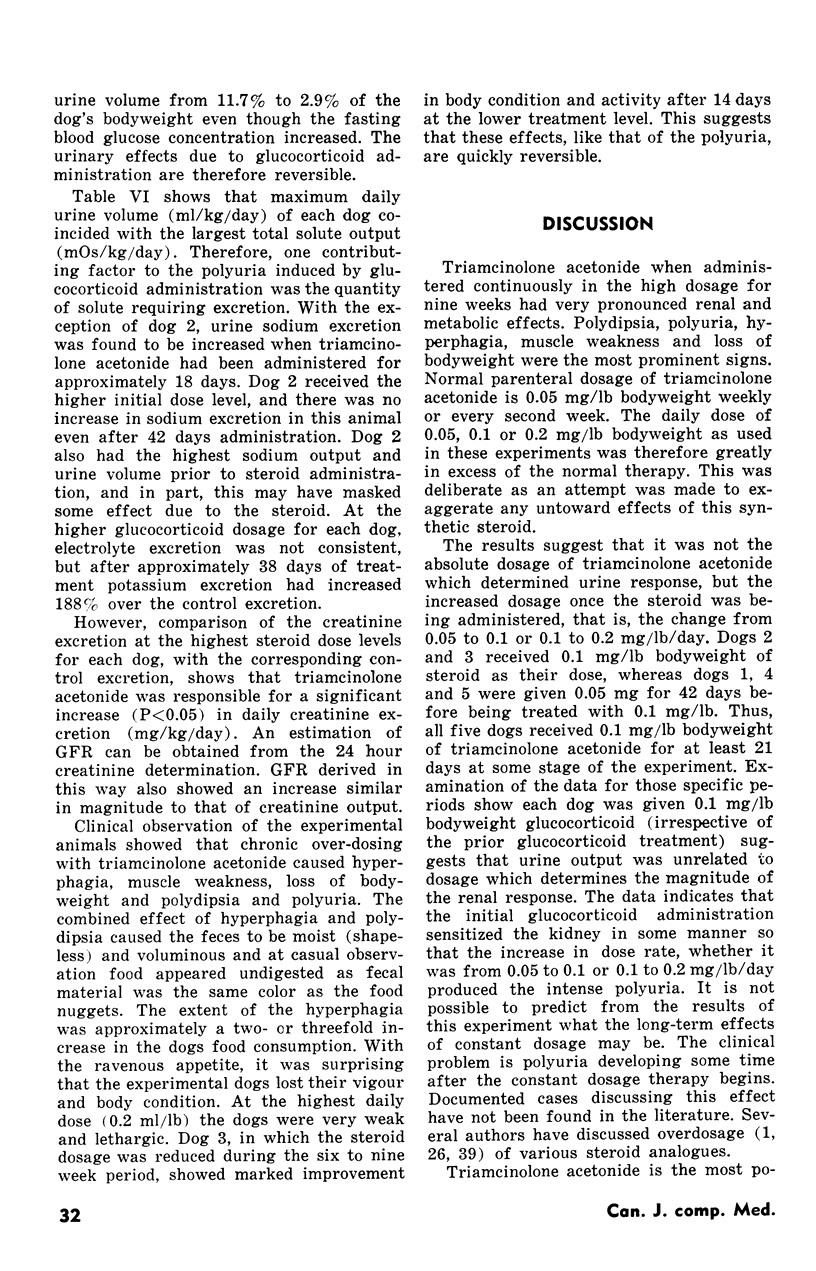
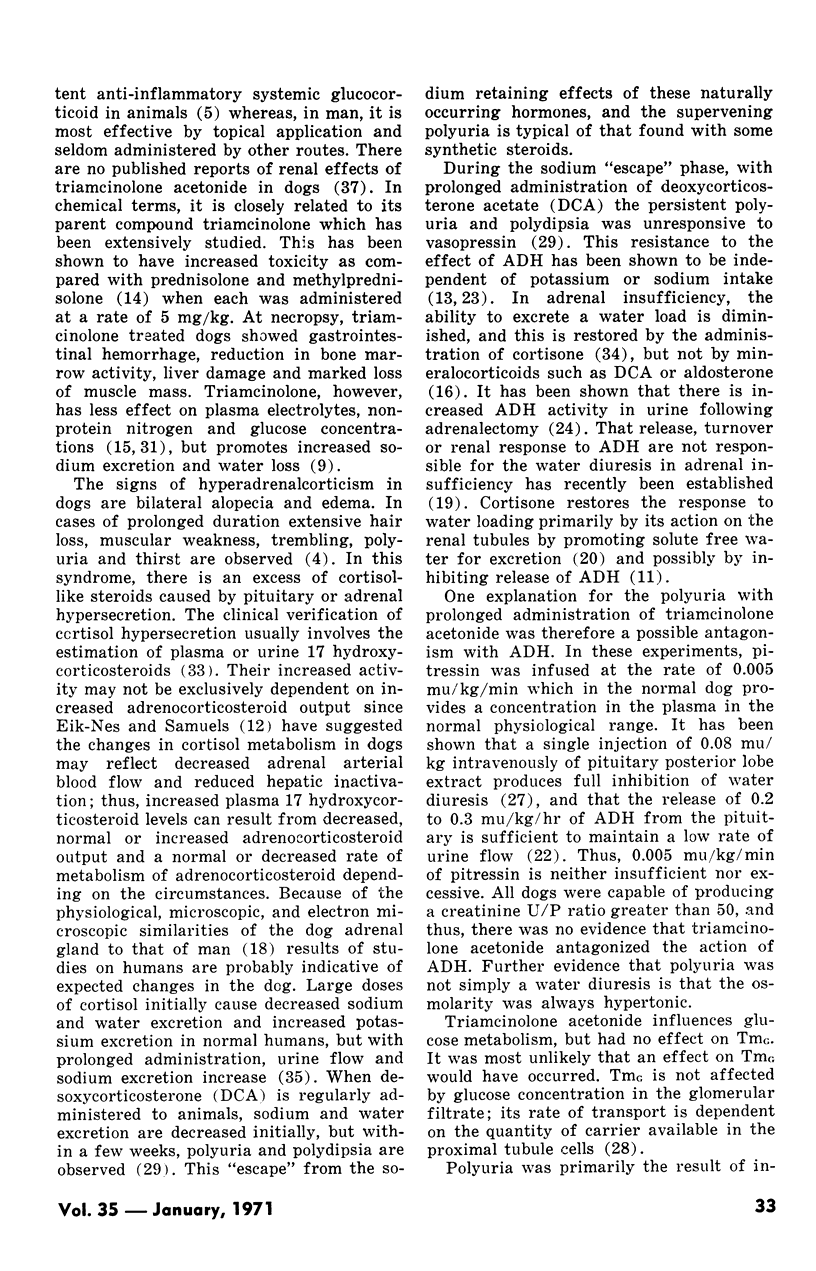
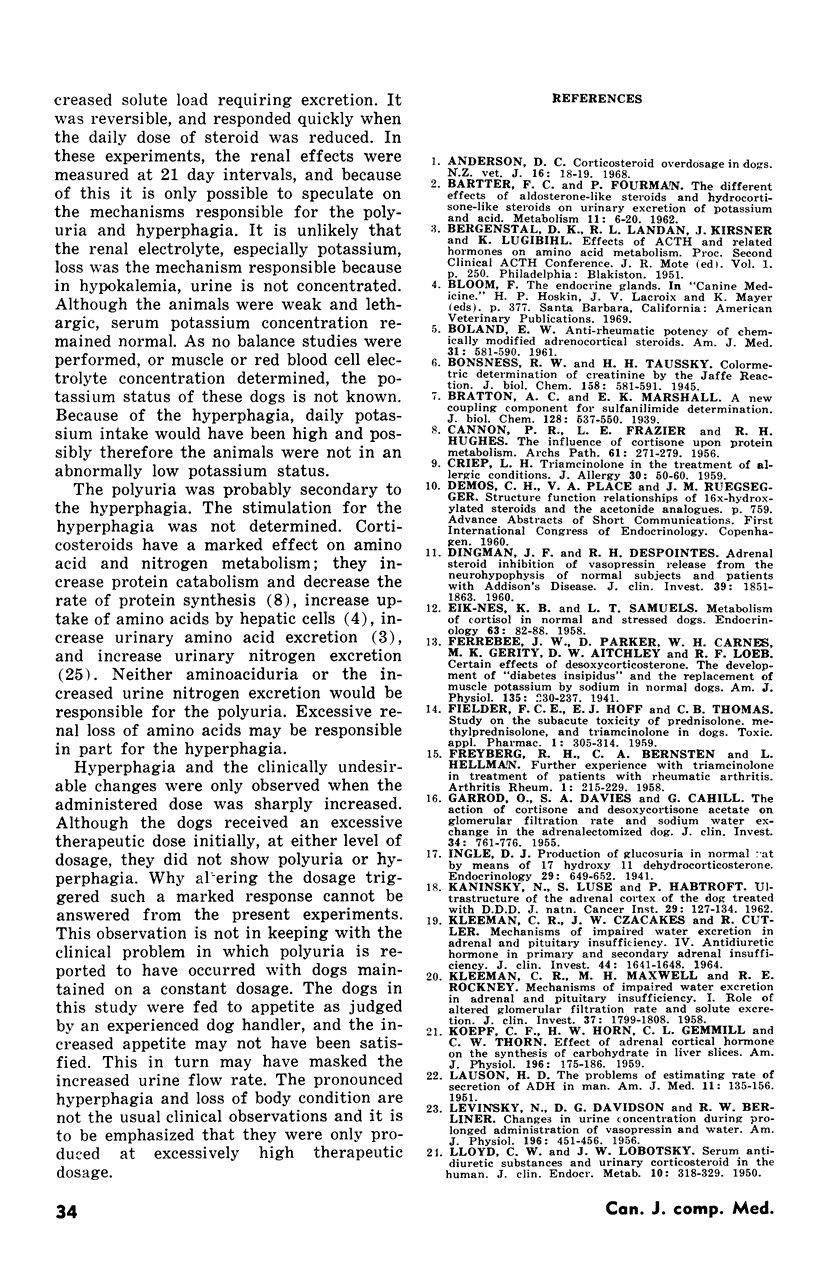
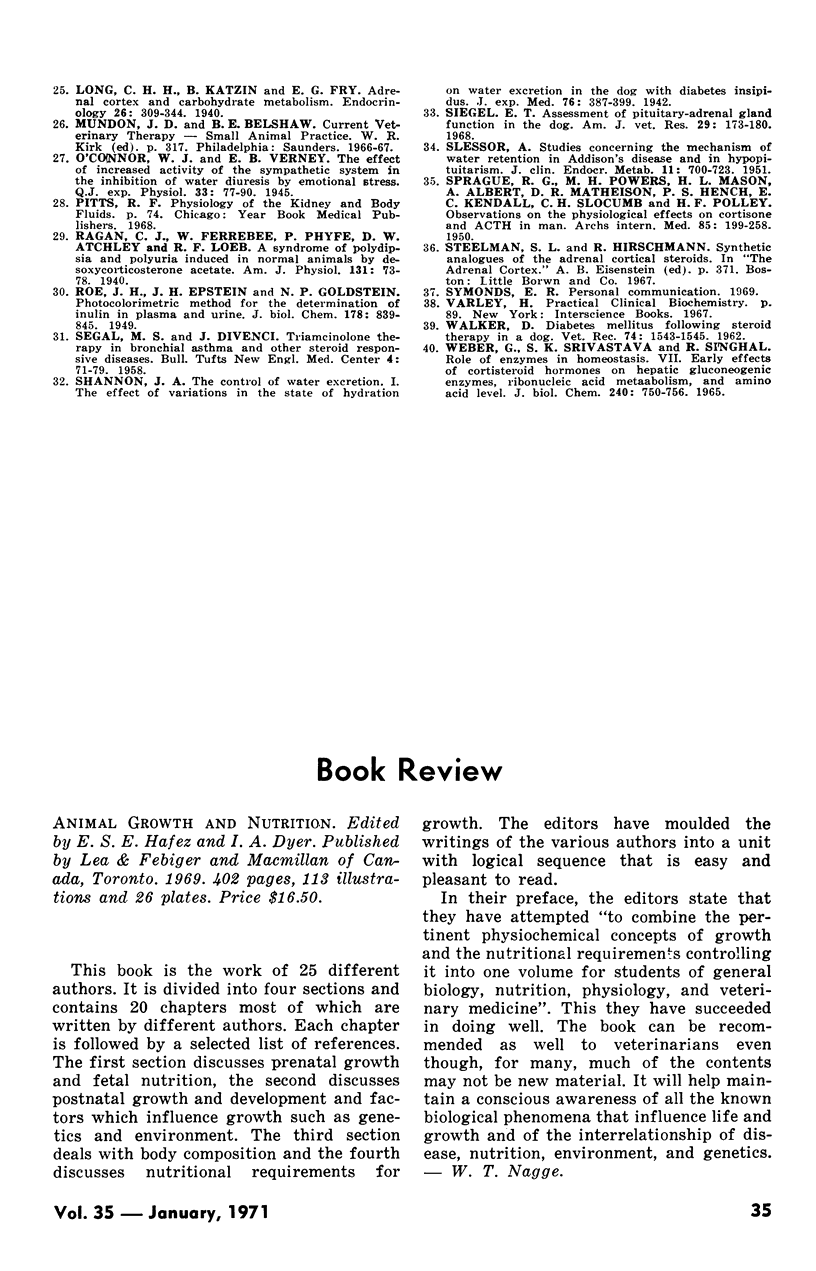
Selected References
These references are in PubMed. This may not be the complete list of references from this article.
- Anderson D. C. Corticosteroid overdosage in dogs. N Z Vet J. 1968 Jan-Feb;16(1-2):18–19. doi: 10.1080/00480169.1968.33739. [DOI] [PubMed] [Google Scholar]
- BARTTER F. C., FOURMAN P. The different effects of aldosterone-like steroids and hydrocortisone-like steroids on urinary excretion of potassium and acid. Metabolism. 1962 Jan;11:6–20. [PubMed] [Google Scholar]
- BOLAND E. W. Antirheumatic potency of chemically modified adrenocortical steroids. Am J Med. 1961 Oct;31:581–590. doi: 10.1016/0002-9343(61)90142-5. [DOI] [PubMed] [Google Scholar]
- CANNON P. R., FRAZIER L. E., HUGHES R. H. The influence of cortisone upon protein metabolism. AMA Arch Pathol. 1956 Apr;61(4):271–279. [PubMed] [Google Scholar]
- CRIEP L. H. Triamcinolone in the treatment of allergic conditions. J Allergy. 1959 Jan-Feb;30(1):50–60. doi: 10.1016/0021-8707(59)90058-9. [DOI] [PubMed] [Google Scholar]
- DINGMAN J. F., DESPOINTES R. H. Adrenal steroid inhibition of vasopressin release from the neurohypophysis of normal subjects and patients with Addison's disease. J Clin Invest. 1960 Dec;39:1851–1863. doi: 10.1172/JCI104209. [DOI] [PMC free article] [PubMed] [Google Scholar]
- EIK-NES K. B., SAMUELS L. T. Metabolism of cortisol in normal and stressed dogs. Endocrinology. 1958 Jul;63(1):82–88. doi: 10.1210/endo-63-1-82. [DOI] [PubMed] [Google Scholar]
- FIELDER F. G., HOFF E. J., THOMAS G. B., TOLKSDORF S., PERLMAN P. L., CRONIN M. T. A study of the subacute toxicity of prednisolone, methylprednisolone, and triamcinolone in dogs. Toxicology. 1959 May;1(3):305–314. doi: 10.1016/0041-008x(59)90115-2. [DOI] [PubMed] [Google Scholar]
- FREYBERG R. H., BERNTSEN C. A., Jr, HELLMAN L. Further experiences with delta 1,9 alpha fluoro, 16 alpha hydroxyhydrocortisone (triamcinolone) in treatment of patients with rheumatoid arthritis. Arthritis Rheum. 1958 Jun;1(3):215–229. doi: 10.1002/art.1780010304. [DOI] [PubMed] [Google Scholar]
- GARROD O., DAVIES S. A., CAHILL G., Jr The action of cortisone and desoxycorticosterone acetate on glomerular filtration rate and sodium and water exchange in the adrenalectomized dog. J Clin Invest. 1955 Jun;34(6):761–776. doi: 10.1172/JCI103131. [DOI] [PMC free article] [PubMed] [Google Scholar]
- KAMINSKY N., LUSE S., HARTROFT P. Ultrastructure of adrenal cortex of the dog during treatment with DDD. J Natl Cancer Inst. 1962 Jul;29:127–159. [PubMed] [Google Scholar]
- KLEEMAN C. R., CZACZKES J. W., CUTLER R. MECHANISMS OF IMPAIRED WATER EXCRETION IN ADRENAL AND PITUITARY INSUFFICIENCY. IV. ANTIDIURETIC HORMONE IN PRIMARY AND SECONDARY ADRENAL INSUFFICIENCY. J Clin Invest. 1964 Aug;43:1641–1648. doi: 10.1172/JCI105039. [DOI] [PMC free article] [PubMed] [Google Scholar]
- KLEEMAN C. R., MAXWELL M. H., ROCKNEY R. E. Mechanisms of impaired water excretion in adrenal and pituitary insufficiency. I. The role of altered glomerular filtration rate and solute excretion. J Clin Invest. 1958 Dec;37(12):1799–1808. doi: 10.1172/JCI103773. [DOI] [PMC free article] [PubMed] [Google Scholar]
- LAUSON H. D. The problem of estimating the rate of secretion of antidiuretic hormone in man. Am J Med. 1951 Aug;11(2):135–156. doi: 10.1016/0002-9343(51)90100-3. [DOI] [PubMed] [Google Scholar]
- LEVINSKY N. G., DAVIDSON D. G., BERLINER R. W. Changes in urine concentration during prolonged administration of vasopressin and water. Am J Physiol. 1959 Feb;196(2):451–456. doi: 10.1152/ajplegacy.1959.196.2.451. [DOI] [PubMed] [Google Scholar]
- SEGAL M. S., DUVENCI J. Triamcinolone (aristocort) therapy in bronchial asthma and other steroid responsive diseases. Bull Tufts N Engl Med Cent. 1958 Apr-Jun;4(2):71–79. [PubMed] [Google Scholar]
- SLESSOR A. Studies concerning the mechanism of water retention in Addison's disease and in hypopituitarism. J Clin Endocrinol Metab. 1951 Jul;11(7):700–723. doi: 10.1210/jcem-11-7-700. [DOI] [PubMed] [Google Scholar]
- SPRAGUE R. G., POWER M. H. Observations on the physiologic effects of cortisone and ACTH in man. Arch Intern Med (Chic) 1950 Feb;85(2):199–258. doi: 10.1001/archinte.1950.00230080003001. [DOI] [PubMed] [Google Scholar]
- Siegel E. T. Assessment of pituitary-adrenal gland function in the dog. Am J Vet Res. 1968 Jan;29(1):173–180. [PubMed] [Google Scholar]
- WEBER G., SRIVASTAVA S. K., SINGHAL R. L. ROLE OF ENZYMES IN HOMEOSTASIS. VII. EARLY EFFECTS OF CORTICOSTEROID HORMONES ON HEPATIC GLUCONEOGENIC ENZYMES, RIBONUCLEIC ACID METABOLISM, AND AMINO ACID LEVEL. J Biol Chem. 1965 Feb;240:750–756. [PubMed] [Google Scholar]


